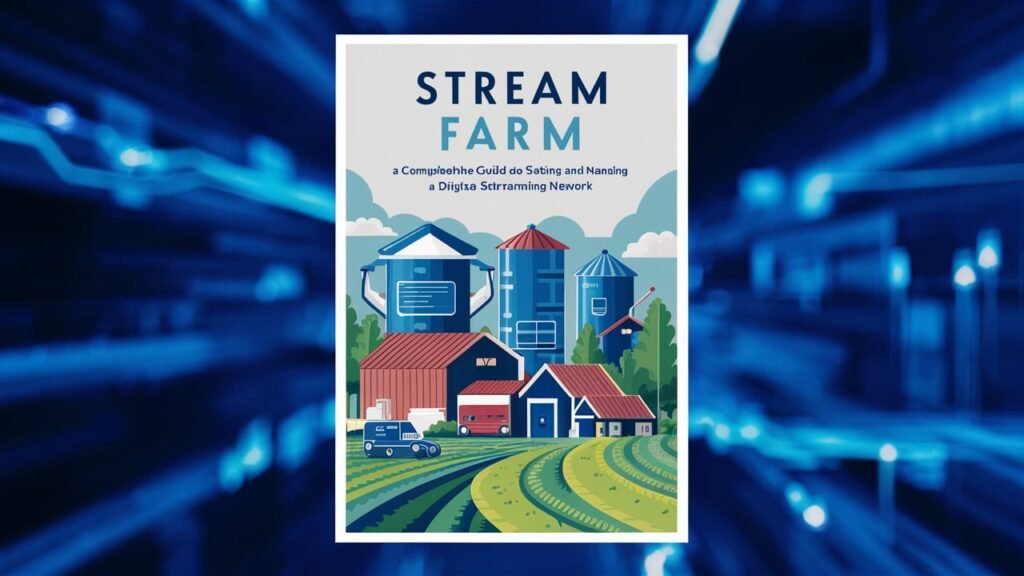In the ever-evolving world of digital content, the concept of a “stream farm” has gained traction among creators and businesses alike. A stream farm refers to a network of devices and software set up to broadcast or stream content across various platforms. This setup can be used for a variety of purposes, from gaming and live shows to educational content and webinars. Whether you’re a content creator looking to expand your reach or a business aiming to enhance its online presence, setting up a stream farm can provide a powerful solution.
In this comprehensive guide, we’ll explore what a stream farm is, how to set one up, and the best practices for managing and optimizing your streaming network. We’ll also discuss the equipment and software required, along with a detailed table comparing different streaming platforms. By the end of this article, you’ll have a clear understanding of how to create a successful stream farm and leverage it for your goals.
What is a Stream Farm?
A stream farm is a system comprising multiple streaming setups that work together to broadcast content across various platforms simultaneously. This can include live streaming on social media, gaming platforms, or any other digital venue where audiences gather. The primary goal of a stream farm is to maximize reach and engagement by making content accessible to a broader audience.
Key Components of a Stream Farm
- Streaming Devices: These include computers, consoles, cameras, and smartphones that capture and transmit content.
- Broadcasting Software: Programs like OBS Studio, Streamlabs, and XSplit facilitate the streaming process by managing video and audio inputs, overlays, and broadcasting settings.
- Network Infrastructure: A robust internet connection, routers, and network switches are essential for maintaining stable and high-quality streams.
- Content Delivery Networks (CDNs): Services like Akamai or Cloudflare that distribute your stream to various platforms, ensuring low latency and high availability.
Setting Up Your Stream Farm
Setting up a stream farm involves several steps, from planning the content to choosing the right equipment and software. Here’s a step-by-step guide to help you get started:
Step 1: Define Your Goals and Audience
Before diving into the technical aspects, it’s crucial to define your goals and target audience. Are you aiming to entertain, educate, or market a product? Understanding your objectives will help you tailor your stream farm to meet specific needs.
Step 2: Choose Your Platforms
Decide which platforms you want to stream on. Popular options include Twitch, YouTube, Facebook Live, and Mixer. Each platform has its own audience and technical requirements, so choose the ones that align with your goals.
Step 3: Select the Right Equipment
Investing in quality equipment is essential for a successful stream farm. Depending on your budget and needs, you may require multiple cameras, microphones, and streaming devices. Ensure your hardware can handle the demands of multi-streaming.
Step 4: Set Up Your Network Infrastructure
A stable and fast internet connection is crucial. Consider using wired connections for better reliability. If you’re streaming from multiple locations, set up a VPN or dedicated server to manage the traffic.
Step 5: Install Broadcasting Software
Choose a broadcasting software that suits your needs. OBS Studio is a popular choice for its versatility and open-source nature. Streamlabs and XSplit offer more user-friendly interfaces with additional features.
Step 6: Test Your Setup
Before going live, test your entire setup to ensure everything works smoothly. Check audio levels, video quality, and network stability. Conducting a test stream can help identify and resolve potential issues.
Table: Comparison of Popular Streaming Platforms
| Platform | Audience | Monetization Options | Unique Features | Best For |
| Twitch | Gamers, Esports | Subscriptions, Ads, Donations | Interactive Chat, Emotes | Gaming Streams |
| YouTube | General, Vloggers | Ads, Channel Memberships | SEO Tools, Large Audience | General Content |
| Facebook Live | Social, Community | Stars, Ads | Community Engagement, Groups | Social Engagement |
| Mixer | Gamers | Donations, Partnerships | Low Latency, Co-Streaming | Interactive Gaming |
| DLive | Blockchain Community | LINO Cryptocurrency | Reward System, Blockchain | Decentralized Streaming |
Best Practices for Managing Your Stream Farm
Once your stream farm is set up, managing and optimizing it is key to maintaining high-quality streams and engaging your audience. Here are some best practices to consider:
Consistent Scheduling
Consistency is crucial in building an audience. Set a regular streaming schedule and stick to it. This helps your viewers know when to tune in and builds anticipation.
Engage with Your Audience
Interacting with your audience can significantly enhance their experience. Use chat features to respond to comments and questions in real-time. Building a community around your content fosters loyalty and increases viewer retention.
Monitor Performance Metrics
Track key performance indicators (KPIs) such as viewer count, engagement rate, and average watch time. Analyzing these metrics helps you understand what works and what needs improvement.
Optimize Video and Audio Quality
High-quality audio and video are essential for a professional-looking stream. Use the best equipment you can afford and optimize your settings for the best performance. Consider investing in a good microphone and camera for clear sound and sharp visuals.
Stay Updated with Trends and Tools
The streaming landscape is constantly evolving, with new tools and trends emerging regularly. Stay updated with the latest developments in streaming technology and content trends to keep your stream fresh and engaging.
Challenges and Solutions in Running a Stream Farm
While setting up and managing a stream farm can be rewarding, it comes with its own set of challenges. Here are some common issues you might face and how to address them:
Bandwidth Limitations
Running multiple streams can consume a significant amount of bandwidth. Ensure you have a high-speed internet connection with adequate upload speed. If necessary, prioritize certain streams or reduce the quality of less critical streams to conserve bandwidth.
Technical Glitches
Technical issues are inevitable in any streaming setup. Prepare for potential problems by having backup equipment and alternative streaming links. Regularly update your software and hardware to avoid compatibility issues.
Copyright Concerns
Streaming copyrighted content without permission can lead to legal issues. Be mindful of the content you stream and obtain the necessary licenses if needed. Use royalty-free music and graphics to avoid copyright claims.
Content Moderation
Managing a large audience can sometimes lead to inappropriate or disruptive behavior in chat. Implement moderation tools and guidelines to maintain a positive and respectful community.
Conclusion: The Future of Stream Farms
As the demand for digital content continues to grow, stream farms are becoming an essential tool for creators and businesses alike. By setting up a stream farm, you can reach a wider audience, engage with viewers in real-time, and monetize your content more effectively. Whether you’re a solo content creator or part of a larger organization, the benefits of a well-managed stream farm are clear.
With the right equipment, software, and strategy, you can create a robust streaming network that caters to a diverse audience. Stay adaptable and continuously refine your setup to keep up with the ever-changing digital landscape. By doing so, you’ll not only enhance your streaming capabilities but also ensure a rewarding experience for your audience.
Stream farms represent a powerful way to expand your digital presence and connect with viewers across the globe. Whether you’re streaming games, educational content, or live events, the potential for growth and engagement is immense. As you embark on your streaming journey, remember that the key to success lies in consistency, quality, and a deep understanding of your audience.



